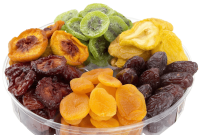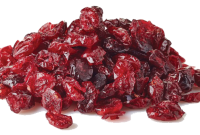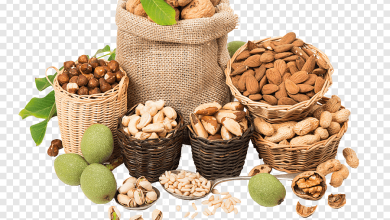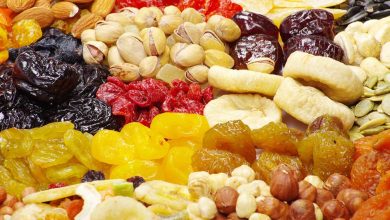What is the definition of dry food? What are the characteristics of dry food?
characteristics of dry food
Definition of dry food:
Dry food, also known as dry kibble or dry pet food, is food designed for pets, especially dogs and cats, but may also include other animals such as bird or small mammal. It is characterized by low moisture content, usually obtained through cooking and dehydration processes. The main ingredients of dry food include grains, meat and/or meat by-products, fats, vitamins, minerals and other additives to provide animals with a nutritionally balanced diet. nourishment.
The process of making dry foods involves cooking ingredients to a dough-like consistency and then using a variety of methods to dry and remove moisture. This produces small, bite-sized pellets or pellets that are easy to handle, store and feed to pets. Dry food is a popular choice among pet owners due to its convenience, longer shelf life, ease of storage, and ability to provide essential nutrients in a concentrated form. Affordability and ease of portion control make dry food a widely used option in animal feeding.
Dry food, also known as dry kibble or dry pet food, is a type of food commonly provided for pets, especially dogs and cats. It is a solid form of nutrition that has undergone a dehydration procedure to eliminate the majority of its moisture. The main ingredients of dry foods typically include grains, meat and/or meat byproducts, fats, vitamins, minerals and other essential nutrients. These ingredients are mixed, cooked, then processed into small pieces or croquettes.
The dehydration process involves cooking ingredients at high temperatures, removing the water content, creating a product that can be stored longer without spoiling. The resulting dry food is convenient for storage, handling and feeding, making it a popular choice among pet owners. Dry food is typically designed to provide a nutritionally balanced diet for pets at different life stages and with different dietary needs.

It is available in a range of formulations, meeting specific requirements such as age, breed size, health status and dietary preferences of the animal. Because of its low moisture and nutritional density, dry food is often cost-effective and easy to control portion sizes, making it a practical choice for many pet owners. However, it is important to ensure that the dry food chosen meets your pet’s specific nutritional needs and is appropriate for your pet’s overall health. You should consult your veterinarian to choose the right dry food for your pet.
What are the characteristics of dry food?
Dry food, commonly referred to as kibble or dry pet food, is a kind of pet food that has undergone dehydration to remove the majority of its moisture. Here are the main characteristics of kibble:
Low moisture: Dry foods have low moisture content, usually between 6 and 10%. The dehydration process removes the majority of the water, which increases the longevity and simplicity of storage.
Convenience: Dry food is convenient for pet owners because it does not require refrigeration and is easy to store, measure and handle. It’s also less messy than wet or canned food. Long shelf life: Due to its low moisture content, dry foods have a longer shelf life than moist foods. Properly stored dry food can last a long time without spoiling.
Nutrient density: Dry pet food is formulated to be nutrient dense, providing essential concentrations of vitamins, minerals, proteins, fats and carbohydrates in each serving.
Variety of Formulations: Dry food is available in a variety of formulas to suit different pets, including puppies, adult dogs or cats, senior pets, and those with health conditions or requirements. specific diet.

Oral health benefits: Some dry foods are designed to support oral health by encouraging chewing, which can help reduce tartar and plaque buildup as well as maintain oral hygiene good for pets. Cost-effective: In general, dry food is more cost-effective than wet or canned food per serving, making it an economical choice for many pet owners.
Potential for overeating: The ease of access and palatability of dry food can sometimes lead to pets overeating. Portion control and dietary guidance are essential to prevent obesity and maintain a healthy weight.
Easy Portion Control: Dry food provides easy portion control, allowing pet owners to accurately manage their pet’s weight and dietary needs.
Allergen considerations: It is important to note that some dry foods may contain allergens such as grains (e.g. wheat, corn, soy). Pet owners should choose a formula that suits their pet’s dietary needs and allergies.
Enhanced additives: Dry foods often contain additives such as preservatives, flavorings, and colors to improve flavor, texture, and overall palatability for pets.
Understanding these characteristics can help pet owners make informed decisions about their pet’s diet and choose the appropriate dry food to meet their specific needs and preferences. Always consult your veterinarian to ensure that the dry food chosen is appropriate for your pet’s overall health and well-being.

Dry food, also known as dry kibble or dry pet food, is a type of food commonly provided for pets, especially dogs and cats. It is a solid form of nutrition that has had most of its moisture removed through a dehydration process. The main ingredients of dry foods typically include grains, meat and/or meat byproducts, fats, vitamins, minerals and other essential nutrients. These ingredients are mixed, cooked, then processed into small pieces or croquettes.




